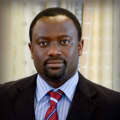Recovery times for meniscal repair surgery vary greatly. The doctor’s prescribed rehabilitation plan and the estimated time needed for healing will depend on:
- The severity of the meniscal tear
- Whether another procedure was done during surgery, such as torn ligament repair or ligament stabilization
In This Article:
- Knee Surgery for a Torn Meniscus
- Recovering From Meniscus Repair Surgery
Example 1: A patient who has surgery to repair a small meniscal tear may be given a brace that allows the knee to bend up to 90 degrees. The patient may need crutches for about 6 weeks and can return to playing sports in approximately 3 months.
Example 2: A patient who has surgery to repair a large meniscal tear as well as knee laxity may not be allowed to bend the knee for 4 to 6 weeks. The patient may need crutches for 8 weeks and be advised not return to sports for approximately 6 months.
See Understanding Meniscus Tears
Other factors that affect recovery
The above examples cite averages, but each person has unique health circumstances that affect his or her healing. Factors such as age, other injuries, overall health, and ability to follow through with physical therapy recommendations all affect the healing timeline.
See 4 Factors Affecting Knee Meniscus Surgery
Rehabilitation and Physical Therapy
Physical therapy is usually carried out over a matter of weeks to make sure the knee regains its full range of motion. A physical therapist can teach the patient how to safely strengthen the quadriceps and other muscles that support the knee joint.
Rehabilitation goals
During the first several weeks after surgery, a patient will work with a doctor and physical therapist to:
- Protect the surgical stitches and affected meniscus tissue
- Reduce swelling
- Extend (straighten) the leg normally
- Regain motor control
During the next phase of rehabilitation, a patient will work with a doctor and physical therapist to:
- Stand on one leg, typically for 15 seconds or longer
- Walk with a normal gait
- Use both legs (without favoring the operated leg)
Once these goals are achieved, physical therapy will continue for younger patients and any patient who wants to return to athletics. This last stage of physical therapy involves preparing the knee for dynamic movement and balance. For example, a physical therapist may teach a basketball player specific drills that prepare the knee for stopping, starting, and pivoting during gameplay.

